This article will outline conditions relevant to the older equine patient and the considerations that need to be taken into account when nursing these patients.
First it is important to define a geriatric animal, the Oxford English Dictionary (2013) defines geriatric as ‘relating to old people, especially with regard to their health care’. So, the geriatric patient is an elderly one and in both horses and donkeys this can be defined as anywhere from 10-20 years depending on the texts you read (Paradis, 2002). This article will look at 20 years plus.
The donkey
The geriatric horse can pose a number of problems and the geriatric donkey a few more. The donkey can be more of a cause for concern due to its stoical nature; it is essential that equine veterinary nurses (EVN) are aware that the donkey will only usually show signs of discomfort when the condition has progressed to the point at which it has become terminal (Duffield, 2008). The donkey sanctuary provide a wealth of information as well as producing The Professional Handbook of the Donkey and a number of leaflets that can be of use to those not accustomed to dealing with them. It is especially important to be aware that a dull donkey is not a well donkey, they naturally show very subtle signs of pain and discomfort so educating clients on the importance of getting a quiet donkey checked out is paramount (Duffield, 2008).
Companions
It is important that elderly donkeys with a long-term companion stay together where possible. Donkeys form strong bonds with their companions and they can deteriorate quicker if separated from their friend (Figure 1). This can increase the incidence of hyperlipaemia in the sick donkey (or pony) (Horspool, 2008).
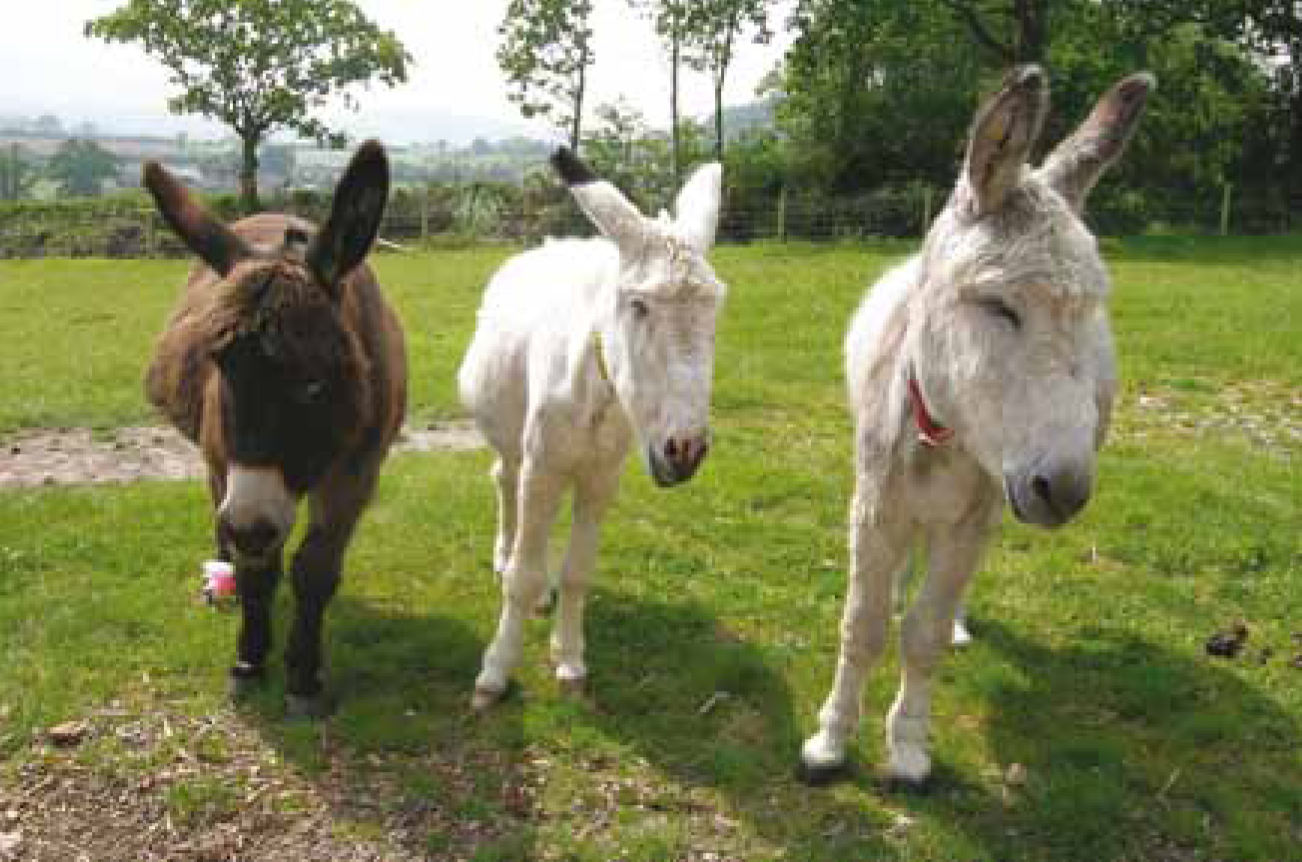
Feeding the elderly equine
Feeding of the older equine will inevitably change as energy requirements change due to a potential reduction in workload and/or medical conditions that warrant a change of diet. It is vitally important to take into account the body condition of the horse (Siciliano, 2002); if the horse is underweight it is probably not being suitably fed but at the same time a horse that is overweight may also be being fed inappropriately. Ralston (2001) suggests that the older equine requires care with regard to levels of calcium in the diet due to the high incidence of renal calculi in geriatrics being fed high levels of calcium in the form of alfalfa for example.
The most common conditions requiring a change in diet are those of the teeth; diastemas and missing teeth can cause a problem and these should be addressed regularly at least yearly if not every 6 months (Holland, 2006). The horse has open rooted teeth that are continuously erupting, for this reason as the animal ages the teeth become smaller and the animal is more susceptible to losing teeth. The increased understanding of the needs of the elderly equine and the adjusted management means that they are living for longer despite a number of them having missing teeth (Graham, 2002). Patients with missing teeth may struggle to eat long fibre such as hay, and signs such as quidding and long fibre found in faeces may be seen. This inability to chew long fibre can predispose elderly horses to impaction type colic and choke (Jarvis, 2011). Owners should exchange hay for something easier to chew such as fresh grass, dried grasses or grass pellets (Holland, 2006). The grass pellets are soaked prior to feeding, producing a grassy mash which is very easy to swallow with minimal chewing, and so is especially helpful when extensive tooth loss is seen (Graham, 2002). It may also be helpful to raise the feed buckets; if an elderly horse is not eating well from the floor they may be experiencing some discomfort when lowering their head.
Arthritis
Arthritis is common in the elderly horse and can require long-term non-steroidal anti-inflammatory drug (NSAID) therapy, which may increase the incidence of gastric ulceration as detailed on the data sheet (NOAH, 2013). Arthritis mainly affects movement, and it is not uncommon to find an elderly horse looking stiff in the morning if stabled at night. One living at grass may not suffer as much as they are able to move around more freely (Ralston, 2001). Whether living in or out it is important to ensure adequate warmth is provided; if they become cold the symptoms of arthritis are accentuated. Suitable rugs should be used and, if stabled, Jarvis (2011) suggests that a deep bed and rubber matting can minimise injury in stabled patients with arthritis and can aid in preventing pressure sores if they lie down for prolonged periods. Jarvis (2011) also suggests that allowing the older patient to lie down is beneficial for its recuperation, which makes stable management particularly important to ensure they are not continuall lying in urine/faeces. Jarvis (2009) also suggests that the use of joint supplements may aid in relieving the symptoms of arthritis in the elderly.
Pituitary pars intermedia dysfunction (PPID)
PPID, known more commonly as equine Cushing's disease, is caused by an abnormality of one aspect of the pituitary gland. This disease can cause a number of signs that EVNs need to be aware of. PPID affects over 2o% of horses aged 15 years and older (McGowan et al, 2013). The long curly coat (hirsutism) in Figure 2 is commonly seen in patients suffering from PPID along with other endocrine imbalances, and reduces the animal's ability to thermoregulate, causing the patient to sweat (Jarvis, 2011). This requires careful management to enure these patients are not over rugged while also ensuring they do not become cold. Other symptoms include polyuria and polydipsia so close monitoring of water consumption is required (Jarvis, 2011). They are at a higher risk of suffering from laminitis, which may mean that the diet needs to be re-assessed to reduce occurrence. Enquiring on admission whether they have suffered previously is beneficial as laminitis can recur at times of stress such as with the change of management and people that occurs on admission to a hospital environment. Potentially immunosuppressed patients such as the elderly are also at a greater risk of nosocomial infections so extra care should be taken to minimise these by ensuring gloves are always worn when dealing with catheters and/or wounds. Antioxidants may be beneficial, supporting the suppressed immune system. PPID can also reduce the ability of the patient to synthesise vitamin C and lipoic acid so a feed balancer may also be beneficial (Jarvis, 2009).
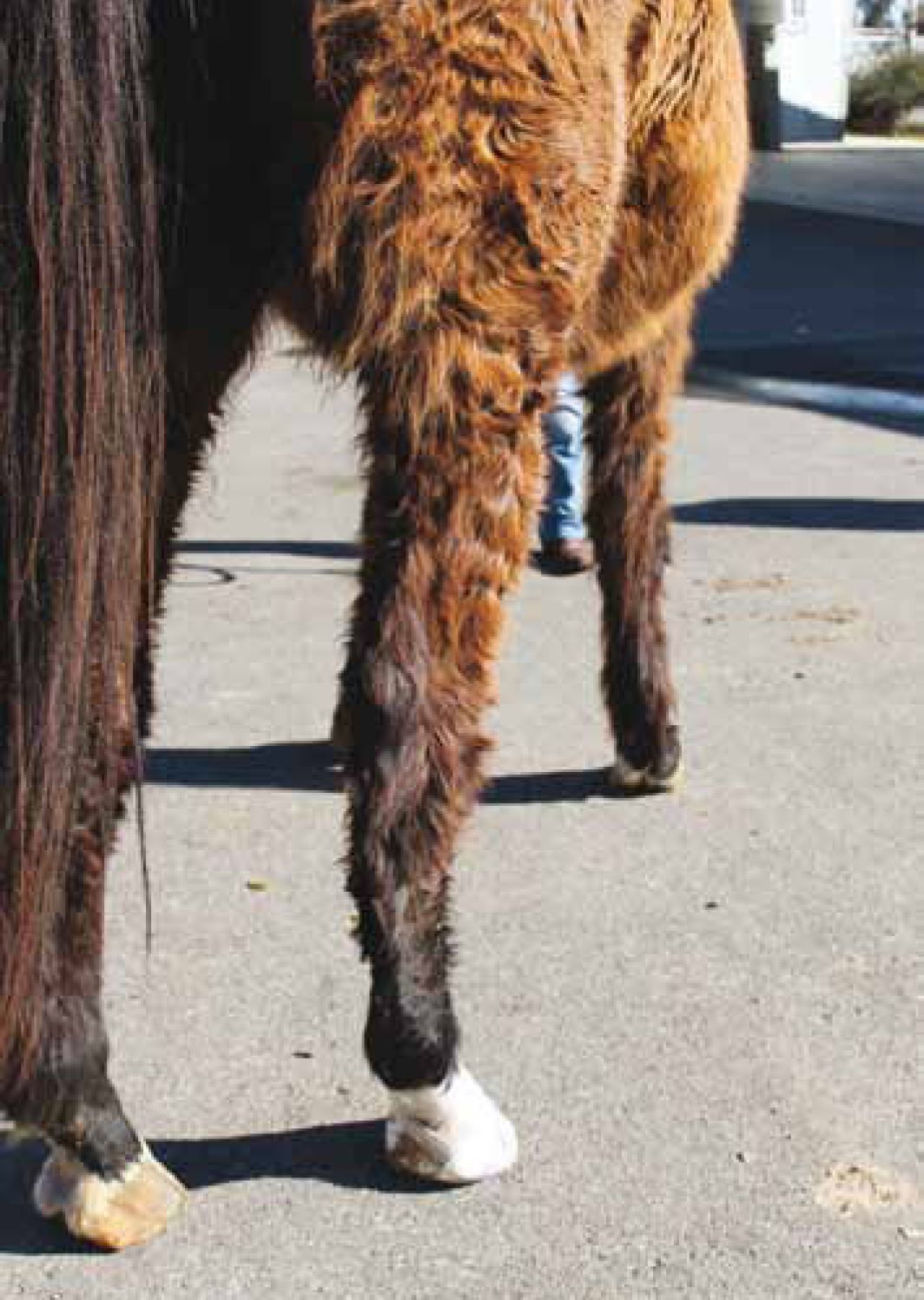
Laminitis
Although laminitis can occur in equids of any age it is a common sign in patients with PPID. Analysis of submissions made to the Liphook Equine Hospital from horses across the UK with a history of laminitis revealed 80% of horses had results that were consistent with PPID and/or equine metabolic syndrome (EMS) (Rendle, 2013). It is thought that an increase in insulin levels (hyperinsulinaemia) leads to damage to the laminae in the feet and so causing laminitis (Durham et al, 2014).
Clinical signs of laminitis include increased digital pulse, increased temperature of the hoof capsule and lameness. The laminitis case will rock back onto their heels to alleviate weight-bearing on the forelimbs. More subtle signs include walking with a stilted gait, a shortened cranial phase of the stride, and also, reluctance to walk on hard ground or turn in tight circles (Hunt, 2002).
Any laminitis case should be tested for PPID and insulin resistance. If there is evidence of PPID on blood testing, then treatment with pergolide should be initiated. Patients suffering from laminitis should have a stable with rubber matting in and a deep bed to cushion the feet and prevent injury as these patients may spend a lot of time lying down. Due to extended periods of recumbence it is therefore important to keep these beds clean and remove faeces and urine regularly as extended periods in wet conditions can cause softening of the already compromised hoof wall. Some horses may be treated with acepromazine, this will cause a certain level of tranquilisation, and this will vary from patient to patient, but be aware that the patient is expected to be slightly quieter than usual. Farriery is a big part of managing laminitis and veterinary surgeons, nurses and farriers will often work closely together to provide the best possible foot support, with the help of x-ray pictures (Figure 3). NSAIDs will most probably need to be administered for pain relief.
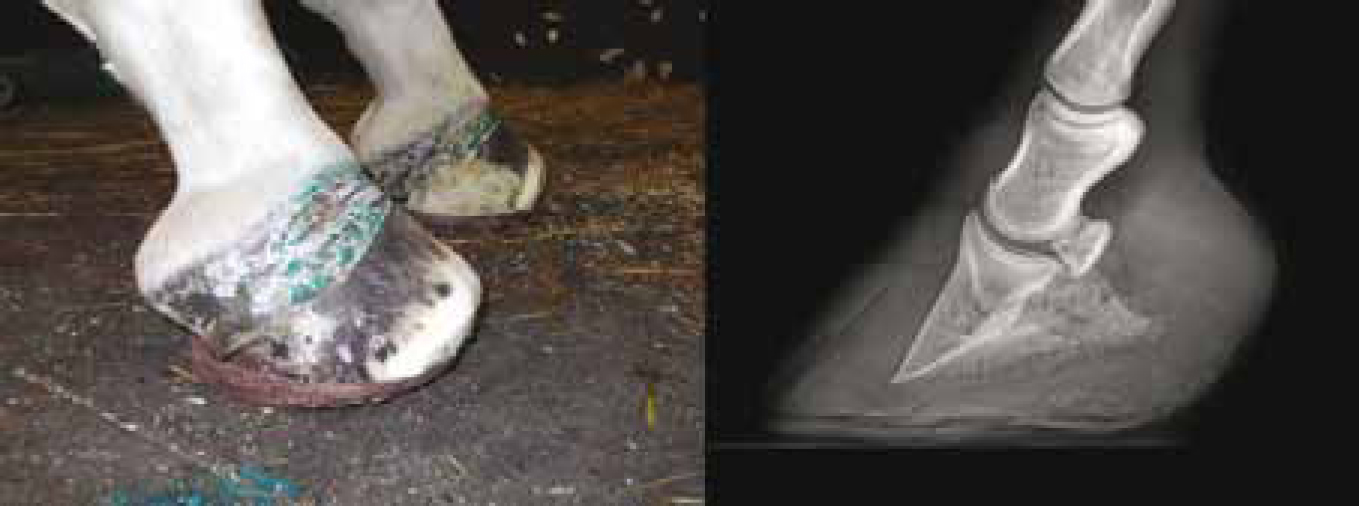
Cardiac disease
Cardiac disease may affect the elderly horse, although Marr (2009) suggested that heart failure only accounted for 8% of deaths in an elderly group of horses. The most common abnormality is slow degeneration of the function of some of the valves in the heart, leading to regurgitation of blood, which causes turbulence around the valve, and consequently, a murmur when the heart is listened to with a stethoscope. Any unusual heart sounds picked up on cardiac auscultation should be reported to the veterinary surgeon in charge of the case. Eventually, in a few cases, valvular regurgitation can result in congestive heart failure where the heart can no longer compensate for the leaky valve. Clinical signs of congestive heart failure include more obvious jugular pulses, exercise intolerance, a dry cough, tachycardia and brisket and ventral oedema amongst others (Sage, 2002). Depending on the severity, age, size of horse, and other factors, congestive heart failure might be treated.
Neoplasia
Neoplasia can be seen in horses of any age but masses such as squamous cell carcinoma (SCC) are more common in middle to old horses (Valentine, 2006). SCCs are most common on the genitalia (Figure 4) and ocular regions (Figure 5), these can be surgically excised and this is the treatment of choice, especially with penile tumours (Valentine, 2006). Nursing cases that have had a full or partial phallectomy to remove tumours can be very challenging. The sheath tends to swell and they require very careful monitoring to ensure urination continues to occur. The stables should be kept clean so that if urination ceases this is picked up quickly and investigated; controlled in-hand walking cannot only help with mental stimulation of the patient but can also reduce the swelling of the sheath.
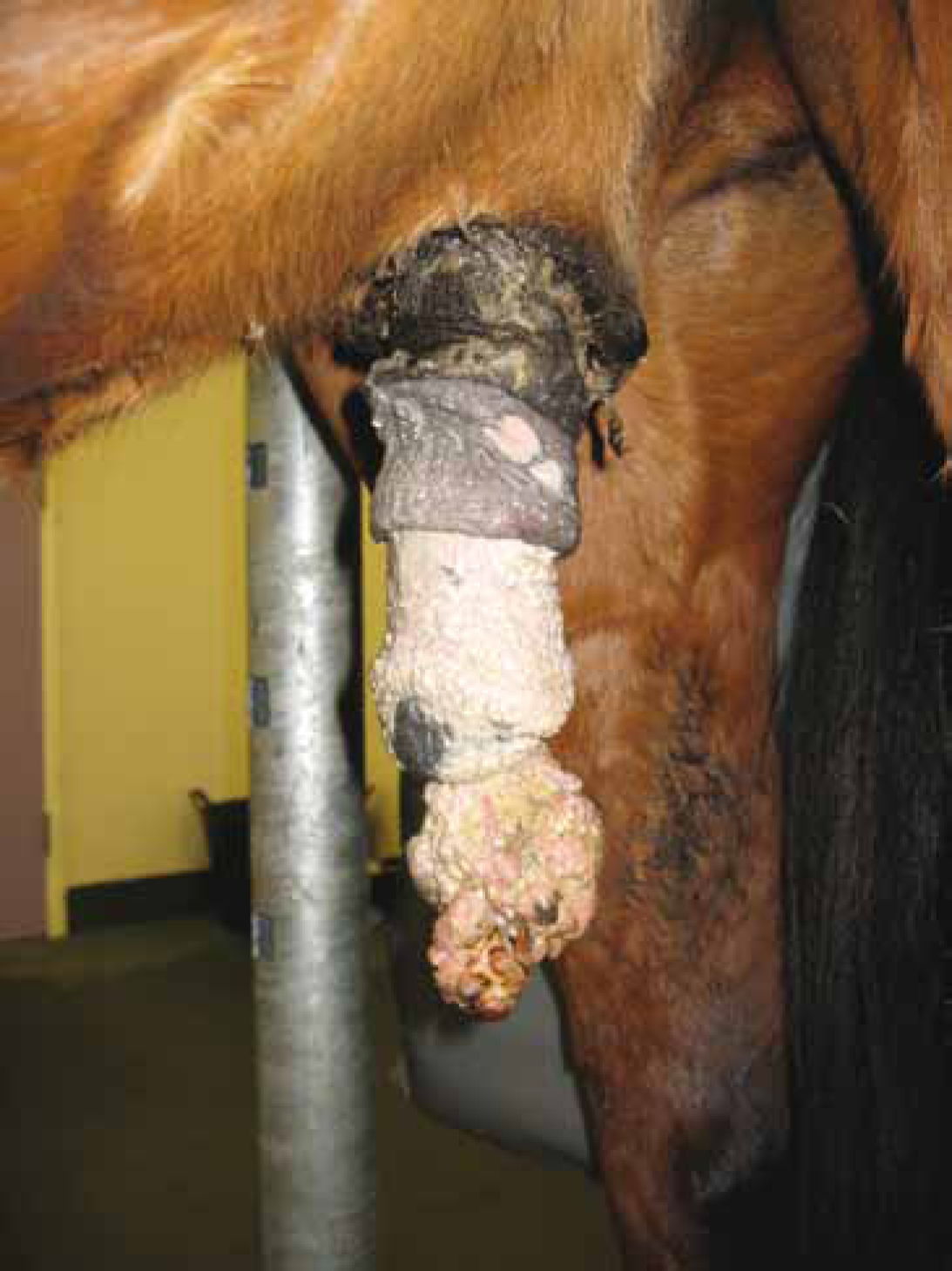
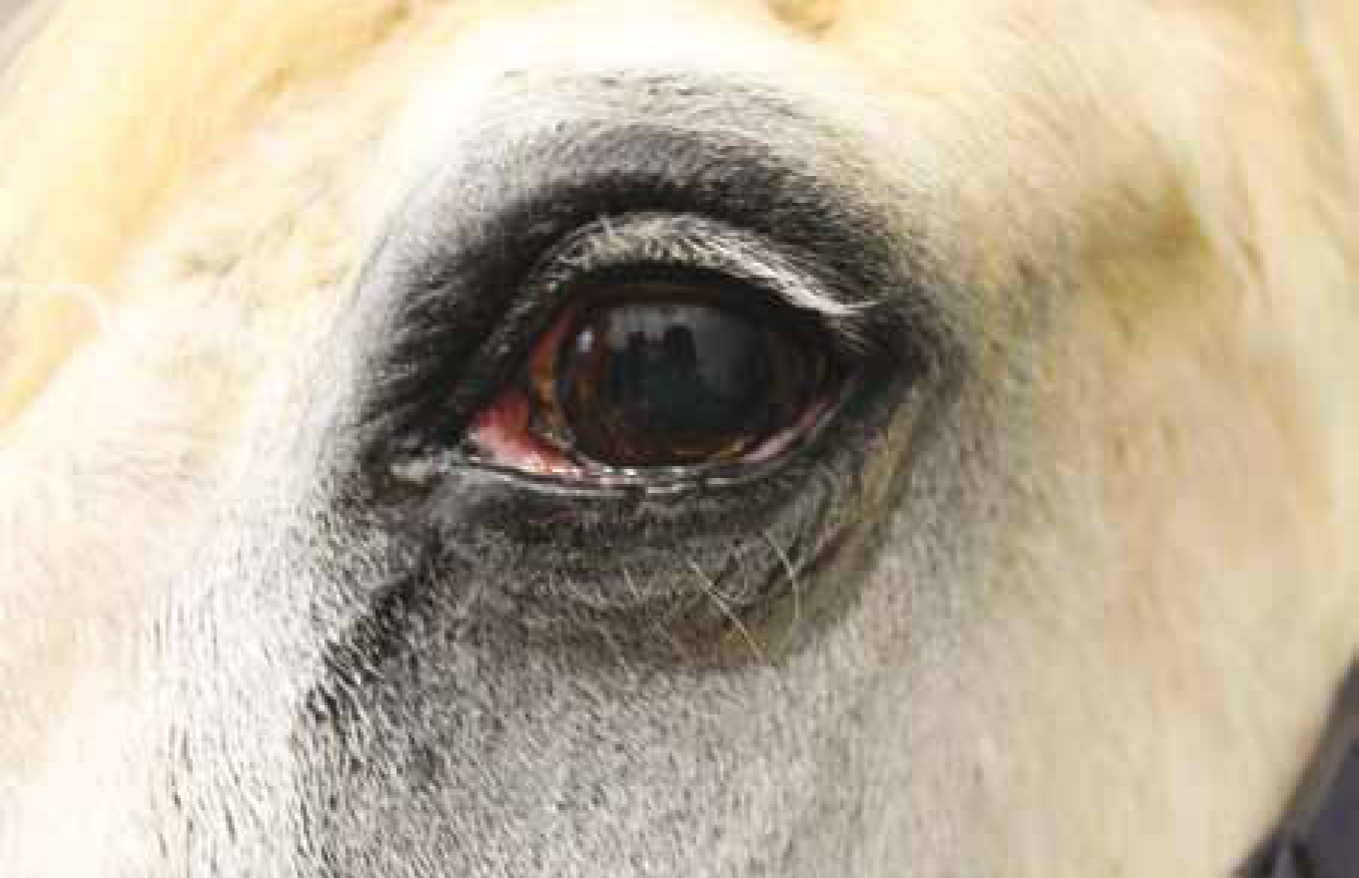
Patients who have had a tumour removed from the ocular region (Figure 5), for example the third eyelid, will require eye medications and this should be done in a compassionate manner ensuring that the patient is rewarded after administration. In the author's experience the older horse much like the older human can become cantankerous in their old age and may require more restraint and/or bribery to facilitate treatment. It is advisable to feed these patients from the floor where possible to prevent particles of hay from entering the eye and causing further irritation.
Melanomas are a common form of neoplasia seen in elderly grey horses, and can be common around the perineum, base of the tail and the prepuce. These are slow growing but in time can become very large, obstructing the anal sphincter (Figure 6), or become secondarily infected with bacteria or maggots. These patients mainly require management to ensure the patient is able to pass urine and/or faeces depending on the position of the tumour and ensuring that the area is kept clean especially in the summer months to avoid attracting flies (Valentine, 2006).
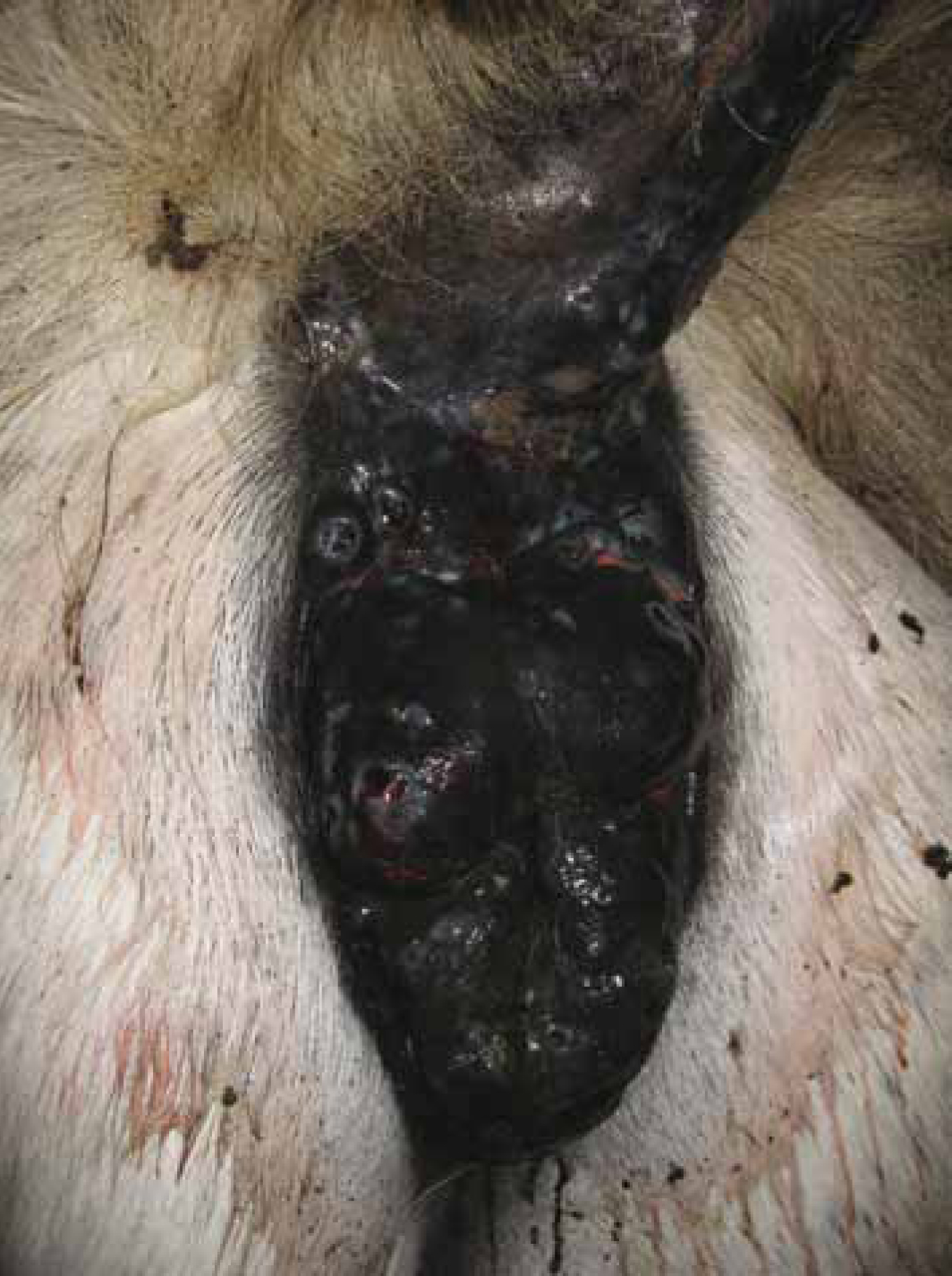
Colic
A lipoma is the most common intra-abdominal tumour seen in geriatric patients, these fatty lumps can form long thin stalks and cause strangulation of the intestines (pedunculated lipoma) requiring an exploratory laparotomy to resolve the strangulation (Valentine, 2006); Figure 7 shows the damage a lipoma can cause. Colic patients require close monitoring post surgery to ensure they are passing faeces and there should be a gradual controlled reintroduction of food under the guidance of the veterinary surgeon.
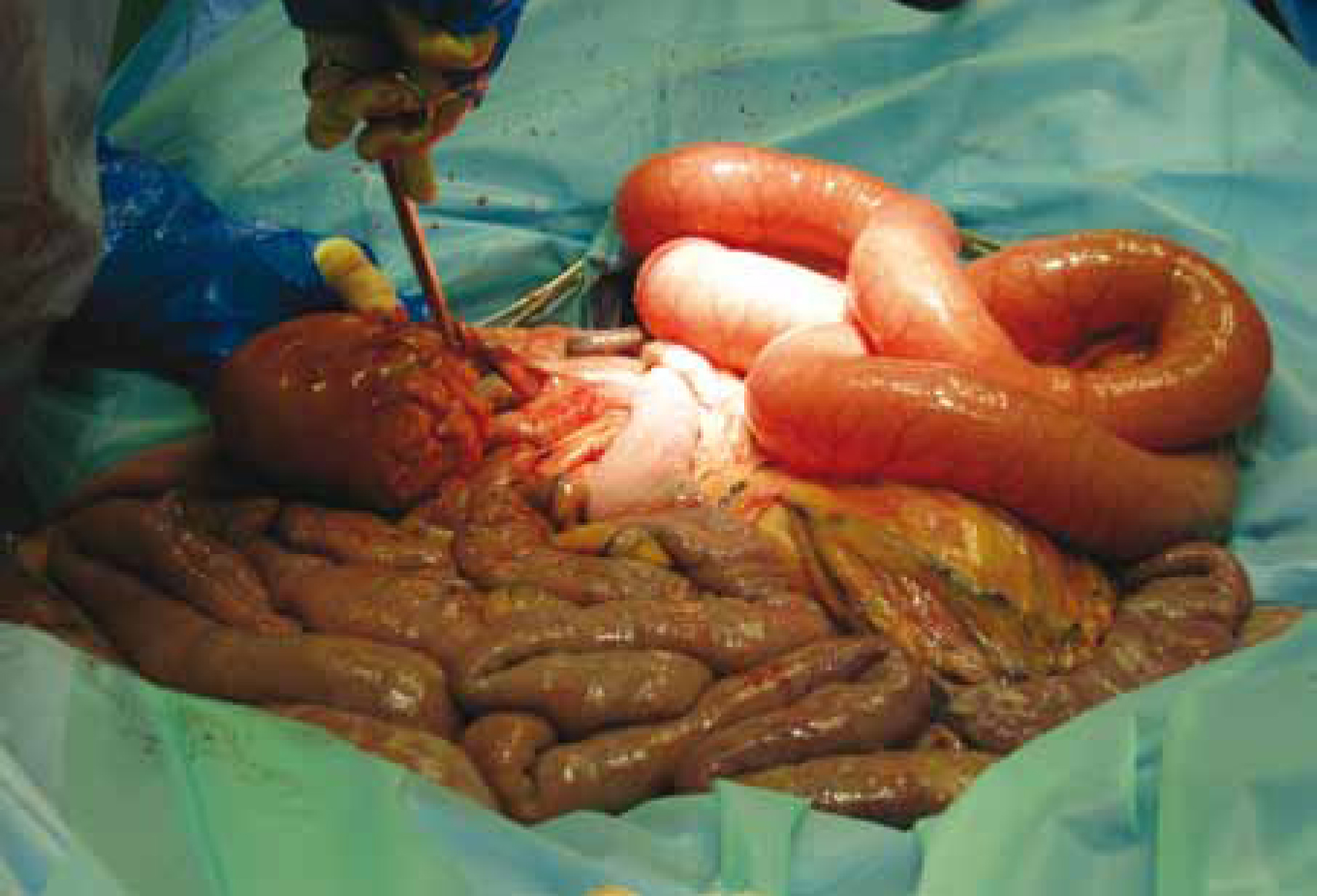
Intestinal parasitism can also cause a problem in the elderly, resulting in colic symptoms, especially those that have previously had an inefficient anthelmintic treatment programme. Addressing the anthelmintic programme and paddock management is important to prevent further colic symptoms (Holland, 2006).
Cataracts
As horses age they are at an increased risk of cataract formation (opacity of the lens in the eye). This can cause poor vision and/or blindness in the elderly horse (Chandler, 2006). Patients suffering from poor vision can be more volatile than they first appear, depending on the general temperament of the animal. Always ensure that patients with vision impairement are talked to and try to approach them from the ‘good’ side rather than the affected side if possible. The Donkey Sanctuary have noticed in their communities that if a donkey has a sight impairment their close friend will act as their second pair of eyes and they tend to stay close to each other for this reason. Clients should be made aware that horses that are losing their sight or have lost some of their vision require consistency in their environment, so that they are able to find food and water. This also helps to prevent head injuries as much as possible especially if they are not lucky enough to have a friend to assist them (Sprayson, 2008).
Miscellaneous
Allergies, such as dust allergies, often resulting in recurrent airway obstruction, are found frequently in the older horse; occasionally these can be complicated by the presence of a secondary respiratory infection. Patients with an allergy require accommodation with sufficient ventilation and hay should be fed from the floor and should be of good quality, forage should either be soaked or alternatively haylage could be fed instead (Holland, 2006).
It is pertinent to remember that the elderly may have sub-clinical renal and/or hepatic problems so routine health blood sampling as part of an annual health check can be used to pick up these diseases (Loving, 2006).
Conclusion
In conclusion the older patient can cause significant management issues in practice; getting all the management and health information from the owner on admission is invaluable as this can prevent a flair up of a pre-existing condition during hospitalisation. Geriatric patients require some extra tender loving care (TLC) and it is important to keep in contact with the veterinary surgeon in charge of the older patient if something untoward is found during daily checks as stress can exacerbate conditions that are already present. Ensure nursing notes are clear and concise and any special management practices should be clearly explained in these to make it easier at shift changes.

